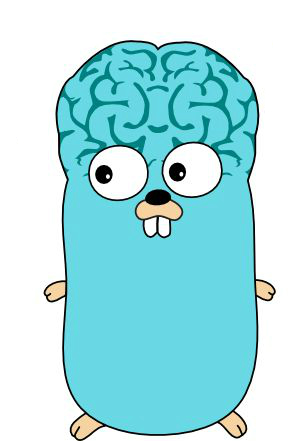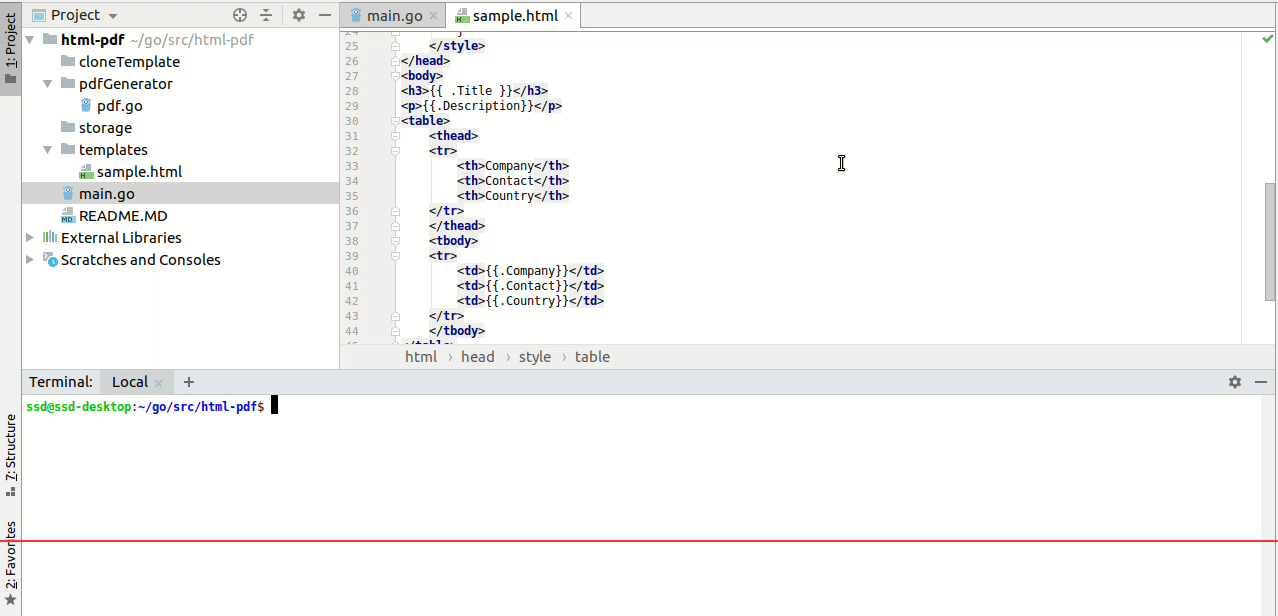Gota: DataFrames, Series and Data Wrangling for Go
This is an implementation of DataFrames, Series and data wrangling methods for the Go programming language. The API is still in flux so use at your own risk.
DataFrame
The term DataFrame typically refers to a tabular dataset that can be viewed as a two dimensional table. Often the columns of this dataset refers to a list of features, while the rows represent a number of measurements. As the data on the real world is not perfect, DataFrame supports non measurements or NaN elements.
Common examples of DataFrames can be found on Excel sheets, CSV files or SQL database tables, but this data can come on a variety of other formats, like a collection of JSON objects or XML files.
The utility of DataFrames resides on the ability to subset them, merge them, summarize the data for individual features or apply functions to entire rows or columns, all while keeping column type integrity.
Usage
Loading data
DataFrames can be constructed passing Series to the dataframe.New constructor function:
df := dataframe.New(
series.New([]string{"b", "a"}, series.String, "COL.1"),
series.New([]int{1, 2}, series.Int, "COL.2"),
series.New([]float64{3.0, 4.0}, series.Float, "COL.3"),
)
You can also load the data directly from other formats. The base loading function takes some records in the form [][]string and returns a new DataFrame from there:
df := dataframe.LoadRecords(
[][]string{
[]string{"A", "B", "C", "D"},
[]string{"a", "4", "5.1", "true"},
[]string{"k", "5", "7.0", "true"},
[]string{"k", "4", "6.0", "true"},
[]string{"a", "2", "7.1", "false"},
},
)
Now you can also create DataFrames by loading an slice of arbitrary structs:
type User struct {
Name string
Age int
Accuracy float64
ignored bool // ignored since unexported
}
users := []User{
{"Aram", 17, 0.2, true},
{"Juan", 18, 0.8, true},
{"Ana", 22, 0.5, true},
}
df := dataframe.LoadStructs(users)
By default, the column types will be auto detected but this can be configured. For example, if we wish the default type to be Float but columns A and D are String and Bool respectively:
df := dataframe.LoadRecords(
[][]string{
[]string{"A", "B", "C", "D"},
[]string{"a", "4", "5.1", "true"},
[]string{"k", "5", "7.0", "true"},
[]string{"k", "4", "6.0", "true"},
[]string{"a", "2", "7.1", "false"},
},
dataframe.DetectTypes(false),
dataframe.DefaultType(series.Float),
dataframe.WithTypes(map[string]series.Type{
"A": series.String,
"D": series.Bool,
}),
)
Similarly, you can load the data stored on a []map[string]interface{}:
df := dataframe.LoadMaps(
[]map[string]interface{}{
map[string]interface{}{
"A": "a",
"B": 1,
"C": true,
"D": 0,
},
map[string]interface{}{
"A": "b",
"B": 2,
"C": true,
"D": 0.5,
},
},
)
You can also pass an io.Reader to the functions ReadCSV/ReadJSON and it will work as expected given that the data is correct:
csvStr := `
Country,Date,Age,Amount,Id
"United States",2012-02-01,50,112.1,01234
"United States",2012-02-01,32,321.31,54320
"United Kingdom",2012-02-01,17,18.2,12345
"United States",2012-02-01,32,321.31,54320
"United Kingdom",2012-02-01,NA,18.2,12345
"United States",2012-02-01,32,321.31,54320
"United States",2012-02-01,32,321.31,54320
Spain,2012-02-01,66,555.42,00241
`
df := dataframe.ReadCSV(strings.NewReader(csvStr))
jsonStr := `[{"COL.2":1,"COL.3":3},{"COL.1":5,"COL.2":2,"COL.3":2},{"COL.1":6,"COL.2":3,"COL.3":1}]`
df := dataframe.ReadJSON(strings.NewReader(jsonStr))
Subsetting
We can subset our DataFrames with the Subset method. For example if we want the first and third rows we can do the following:
sub := df.Subset([]int{0, 2})
Column selection
If instead of subsetting the rows we want to select specific columns, by an index or column name:
sel1 := df.Select([]int{0, 2})
sel2 := df.Select([]string{"A", "C"})
Updating values
In order to update the values of a DataFrame we can use the Set method:
df2 := df.Set(
[]int{0, 2},
dataframe.LoadRecords(
[][]string{
[]string{"A", "B", "C", "D"},
[]string{"b", "4", "6.0", "true"},
[]string{"c", "3", "6.0", "false"},
},
),
)
Filtering
For more complex row subsetting we can use the Filter method. For example, if we want the rows where the column "A" is equal to "a" or column "B" is greater than 4:
fil := df.Filter(
dataframe.F{"A", series.Eq, "a"},
dataframe.F{"B", series.Greater, 4},
)
fil2 := fil.Filter(
dataframe.F{"D", series.Eq, true},
)
Filters inside Filter are combined as OR operations whereas if we chain Filter methods, they will behave as AND.
Arrange
With Arrange a DataFrame can be sorted by the given column names:
sorted := df.Arrange(
dataframe.Sort("A"), // Sort in ascending order
dataframe.RevSort("B"), // Sort in descending order
)
Mutate
If we want to modify a column or add one based on a given Series at the end we can use the Mutate method:
// Change column C with a new one
mut := df.Mutate(
series.New([]string{"a", "b", "c", "d"}, series.String, "C"),
)
// Add a new column E
mut2 := df.Mutate(
series.New([]string{"a", "b", "c", "d"}, series.String, "E"),
)
Joins
Different Join operations are supported (InnerJoin, LeftJoin, RightJoin, CrossJoin). In order to use these methods you have to specify which are the keys to be used for joining the DataFrames:
df := dataframe.LoadRecords(
[][]string{
[]string{"A", "B", "C", "D"},
[]string{"a", "4", "5.1", "true"},
[]string{"k", "5", "7.0", "true"},
[]string{"k", "4", "6.0", "true"},
[]string{"a", "2", "7.1", "false"},
},
)
df2 := dataframe.LoadRecords(
[][]string{
[]string{"A", "F", "D"},
[]string{"1", "1", "true"},
[]string{"4", "2", "false"},
[]string{"2", "8", "false"},
[]string{"5", "9", "false"},
},
)
join := df.InnerJoin(df2, "D")
Function application
Functions can be applied to the rows or columns of a DataFrame, casting the types as necessary:
mean := func(s series.Series) series.Series {
floats := s.Float()
sum := 0.0
for _, f := range floats {
sum += f
}
return series.Floats(sum / float64(len(floats)))
}
df.Capply(mean)
df.Rapply(mean)
Chaining operations
DataFrames support a number of methods for wrangling the data, filtering, subsetting, selecting columns, adding new columns or modifying existing ones. All these methods can be chained one after another and at the end of the procedure check if there has been any errors by the DataFrame Err field. If any of the methods in the chain returns an error, the remaining operations on the chain will become a no-op.
a = a.Rename("Origin", "Country").
Filter(dataframe.F{"Age", "<", 50}).
Filter(dataframe.F{"Origin", "==", "United States"}).
Select("Id", "Origin", "Date").
Subset([]int{1, 3})
if a.Err != nil {
log.Fatal("Oh noes!")
}
Print to console
fmt.Println(flights)
> [336776x20] DataFrame
>
> X0 year month day dep_time sched_dep_time dep_delay arr_time ...
> 0: 1 2013 1 1 517 515 2 830 ...
> 1: 2 2013 1 1 533 529 4 850 ...
> 2: 3 2013 1 1 542 540 2 923 ...
> 3: 4 2013 1 1 544 545 -1 1004 ...
> 4: 5 2013 1 1 554 600 -6 812 ...
> 5: 6 2013 1 1 554 558 -4 740 ...
> 6: 7 2013 1 1 555 600 -5 913 ...
> 7: 8 2013 1 1 557 600 -3 709 ...
> 8: 9 2013 1 1 557 600 -3 838 ...
> 9: 10 2013 1 1 558 600 -2 753 ...
> ... ... ... ... ... ... ... ... ...
> <int> <int> <int> <int> <int> <int> <int> <int> ...
>
> Not Showing: sched_arr_time <int>, arr_delay <int>, carrier <string>, flight <int>,
> tailnum <string>, origin <string>, dest <string>, air_time <int>, distance <int>, hour <int>,
> minute <int>, time_hour <string>
Interfacing with gonum
A gonum/mat.Matrix or any object that implements the dataframe.Matrix interface can be loaded as a DataFrame by using the LoadMatrix() method. If one wants to convert a DataFrame to a mat.Matrix it is necessary to create the necessary structs and method implementations. Since a DataFrame already implements the Dims() (r, c int) method, only implementations for the At and T methods are necessary:
type matrix struct {
dataframe.DataFrame
}
func (m matrix) At(i, j int) float64 {
return m.Elem(i, j).Float()
}
func (m matrix) T() mat.Matrix {
return mat.Transpose{m}
}
Series
Series are essentially vectors of elements of the same type with support for missing values. Series are the building blocks for DataFrame columns.
Four types are currently supported:
Int
Float
String
Bool
For more information about the API, make sure to check:
License
Copyright 2016 Alejandro Sanchez Brotons
Licensed under the Apache License, Version 2.0 (the "License"); you may not use this file except in compliance with the License. You may obtain a copy of the License at
http://www.apache.org/licenses/LICENSE-2.0
Unless required by applicable law or agreed to in writing, software distributed under the License is distributed on an "AS IS" BASIS, WITHOUT WARRANTIES OR CONDITIONS OF ANY KIND, either express or implied. See the License for the specific language governing permissions and limitations under the License.








